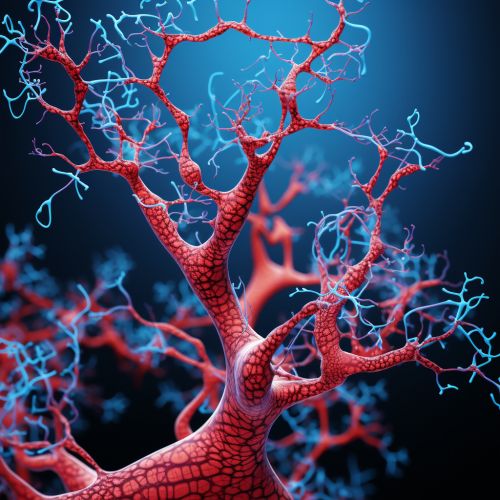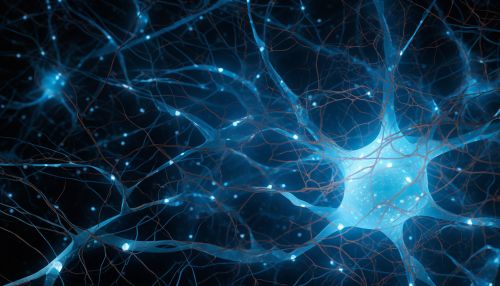Dendrite
Introduction
Dendrites are the branched projections of a neuron that act to propagate the electrochemical stimulation received from other neural cells to the cell body, or soma, of the neuron from which the dendrites project. The word "dendrite" comes from the Greek word dendron, which means "tree". Dendrites are one of two types of protoplasmic protrusions that extrude from the cell body of a neuron, the other type being an axon.
Structure
Dendrites are made up of a series of segments called dendritic segments. Each segment can receive input from other neurons at many different sites along its length, called synaptic sites. The total number of synaptic sites can be very large, up to several thousand per cell. The structure of the dendrites is crucial for the function of the neurons, as it determines how the neuron integrates the synaptic inputs.


Function
The primary function of dendrites is to receive and integrate synaptic inputs from other neurons. The dendrites of a single neuron can receive inputs from a large number of other neurons, and the dendrites integrate these inputs to determine the overall input to the neuron. This integration is a complex process that depends on the properties of the dendrites and the synapses, as well as the patterns of synaptic activity.
Dendritic Spines
Dendritic spines are small protrusions that emerge from a dendrite and form the postsynaptic part of most excitatory synapses in the brain. They are the primary sites of synaptic plasticity, changes in the strength of synaptic connections that are thought to underlie learning and memory.
Dendritic Trees
The dendrites of a neuron are collectively referred to as a dendritic tree. This tree is a key determinant of the computational properties of a neuron. The shape and size of the dendritic tree can vary greatly between different types of neurons, and these differences are thought to reflect differences in the types of computational tasks that the neurons perform.
Dendritic Growth and Development
The growth and development of dendrites is a complex process that is regulated by a variety of factors, including genetic factors, activity-dependent factors, and environmental factors. The process of dendritic development is crucial for the formation of functional neural circuits.
Pathology
Abnormalities in dendritic structure or function can lead to a variety of neurological disorders, including mental retardation, autism, and schizophrenia. In many of these disorders, the dendrites are either abnormally shaped or have abnormal numbers of dendritic spines.
